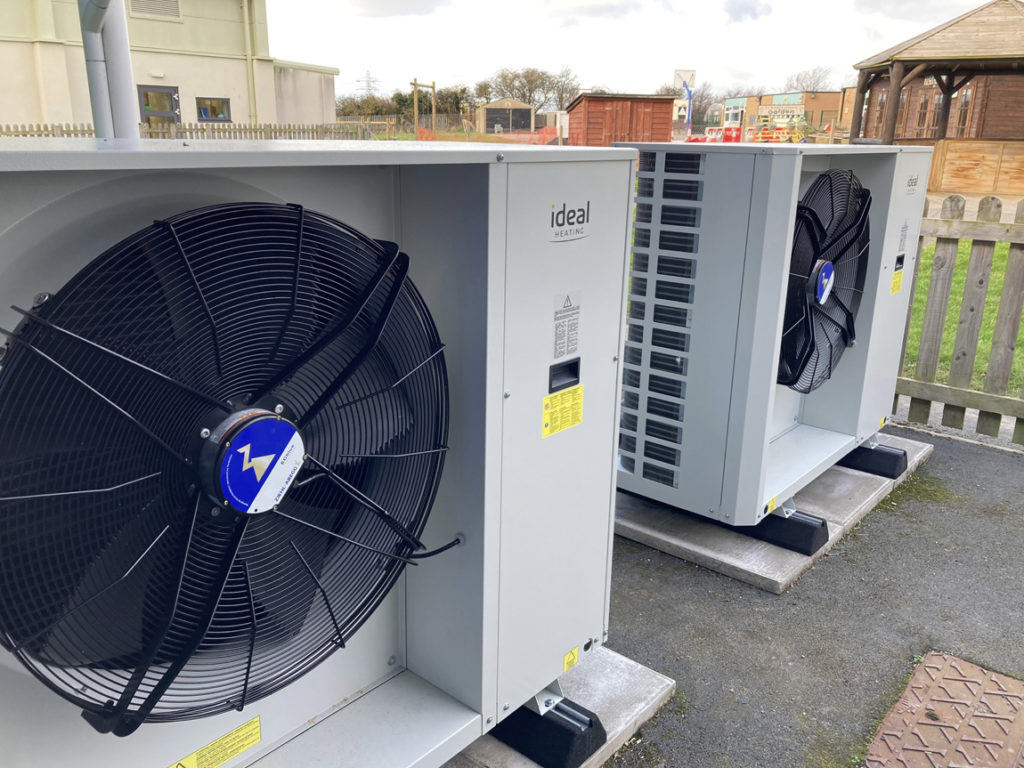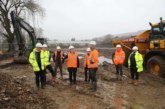
With the transitional period now over, Chris Caton, Product Director – Commercial at Ideal Heating, revisits Approved Document L, Conservation of fuel and power, as a step towards Net Zero 2050.
In December 2021, the Government released an update to Approved Document L, Conservation of fuel and power, providing revised practical guidance on how to meet the requirements of Building Regulations for England.
Approved Document L came into effect on 15th June 2022, but allowed for a transitional period, meaning work subject to a building notice, full planning application or initial notice submitted before that date, providing the work for each building started before 15th June 2023, did not have to comply with the revised guidance. As of 15th June 2023, that transitional phase is over. Now, the uplift to Approved Document L applies to all.
What is the driving force behind these changes and how might they impact heating systems in schools, hospitals and other non-domestic public sector buildings?
The road to net zero
The UK Government has committed to reducing its greenhouse gas emissions by 100% from 1990 levels by 2050. Net zero, as the policy is referred to, would mean the amount of greenhouse gas emissions produced by the UK would be equal to or less than the emissions removed from our environment. Achieving net zero is not going to be easy, but decarbonising our heating has a significant contribution to make. Heating and hot water in buildings are responsible for a fifth (21%) of total carbon emissions in the UK. The key aim of the recent changes to Approved Document L is to reduce CO2 emissions by 31% for dwellings and 27% for other buildings, whilst improving the overall energy efficiency of buildings.
The Public Sector Decarbonisation Fund is a driving factor in reducing carbon emissions from public sector buildings, with the aim of a 75% reduction by 2037 compared to a 2017 baseline. Phases 2 and 3 have a strong focus on heat decarbonisation, with phase 3 providing £1.425bn of grant funding over the financial years 2022/23 to 2024/25 to public sector bodies to install low carbon heating measures that reduce direct carbon emissions from their buildings.
The latest grants, under phase 3a, saw local authorities receiving the largest number of grants (77 of the 231 grants), whilst the NHS received the largest proportion of funding, with £361m being invested through 38 grants. A wide range of technologies were eligible for funding through phases 2 and 3 of the Public Sector Decarbonisation Scheme, with air source heat pumps by far the most popular.
Energy efficiency improvements
Under the revised Approved Document L, a new building’s energy efficiency must be measured, using ‘Primary energy’ in combination with CO2 metrics to assess compliance with Part L. Primary energy calculations use several factors, including the efficiency of the building’s heating system and the energy used to produce fuel and deliver it to the building. In the case of natural gas boilers, the Gross Seasonal Efficiency (GSV) has increased by 2% points in new buildings to 93% for single boilers with less than 2MW output and to 88% to those with more than 2MW.
Lowering the temperature
One of the most fundamental changes under Approved Document L is a new maximum flow temperature of 55°C for wet space heating systems: “all parts of the system, including pipework and emitters, should be sized to allow the space heating system to operate effectively and in a manner that meets the heating needs of the building, at a maximum flow temperature of 55°C or lower.” There are two very good reasons for this 55°C figure.
The first is that it will enable condensing boilers to operate at their most efficient. Condensing boilers can recover heat via the flue and use it for pre-heating purposes. They can only do this when the temperature of the water returning to the boiler is less than 54°C; it’s even more efficient if the temperature is 45°C. Most boilers, however, are set up to output at 80°C and return at 60°C so, whilst the boiler works, it does not condense and that valuable extra heat is not recovered and reused.
The second benefit of a reduced flow temperature is that it paves the way for heat pumps, which achieve maximum Coefficient of Performance (COP) at a flow temperature of 45°C. Heat pumps, such as our Ecomod commercial monobloc air source heat pumps, work by using a refrigeration cycle to transfer heat from the air or ground outside a building to the inside, where it is used for heating and hot water.
They use a relatively small amount of electricity to power the transfer of heat from the environment to the building, and as a result emit significantly less CO2 compared to traditional systems. Since heat is transferred rather than generated, heat pumps can operate up to four times more efficiently than traditional methods, and have the potential to produce four units of heat for every one unit of electricity that they use.

Ysgol Tir Morfa Community School in Rhyl, North Wales, is a great example of how heat pumps are being used to decrease carbon emissions. Denbighshire County Council is aiming to become a carbon neutral council by 2030 and has been assessing its properties for opportunities to move away from fossil fuel based heating as a top priority. Two Ideal Heating 32kW ECOMOD monobloc air source heat pumps have been installed along with solar PV at Ysgol Tir Morfa. A 65-70% reduction in carbon emissions can be achieved by swapping to heat pumps, compared to traditional gas boilers or direct electric appliances.
Not every building will be able to accommodate this lower temperature and in these instances Part L does allow for the heating system to be designed to the lowest design temperature possible that will still meet the heating needs of the building.
Thermal efficiency gains
Of course, in order for heating systems to operate at low temperatures whilst still delivering the warmth required, the building itself must be thermally efficient to retain the heat that is being generated. The Approved Document L uplift therefore has set new minimum efficiency standards for both new and replacement thermal elements, windows and doors.
Delivering on the uplift and beyond
The heating sector is in a transitional state, as we move towards a decarbonised future. The uplift to Approved Document L, Conservation of fuel and power, is the beginning of that transition, paving the way to net zero. Just around the corner, in 2025, the Future Buildings Standard is set to come into effect.
The aim of the Standard is to produce highly efficient non-domestic buildings, which use low carbon heat and have the best fabric standards possible. The buildings should be zero carbon ready, with the ability to decarbonise over time alongside the national grid without any further energy efficiency retrofit work.
Whilst we don’t have a crystal ball to see into the future, it is clear that it will be a future with low carbon heating and energy-efficient buildings, with the public sector very much leading the way.









